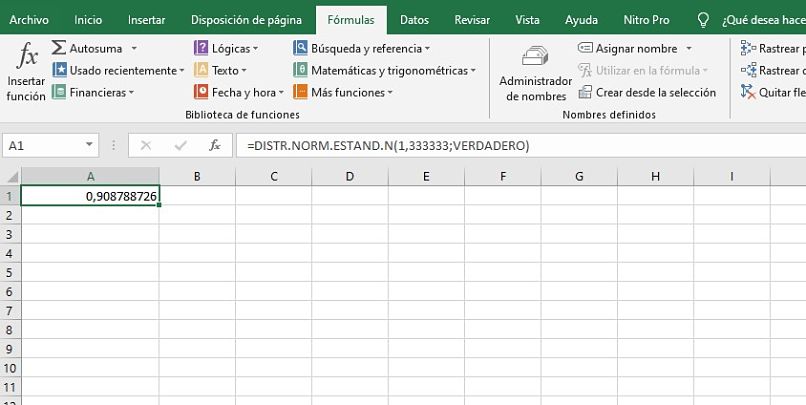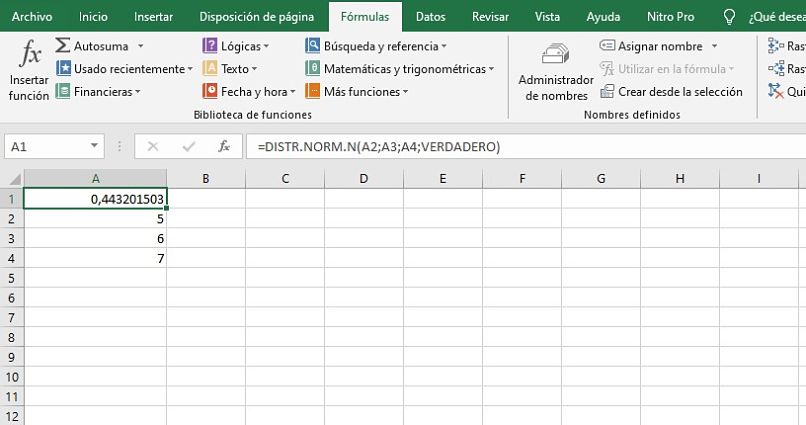Like many other Microsoft Office tools, Excel is a great program for processing important data and information. Learning to use it is always a big plus, and can be a very important job skill in later years.
Among Excel’s features are functions and formulas that help you perform mathematical and statistical operations with ease. For this occasion we will talk about the NORM.N.DIST and N.NORM.DIST.N functions, which are important for interpreting certain types of data and information.
For this reason, in this article you will be able to learn about the great utility of the NORM.DIST and STANDARD.N.DIST functions in the program.
Use and characteristics of the statistical function NORM.STAND.N in Excel
The STANDARD.NORM.DIST function is used to return the standard normal type distribution, using the mean of 0 and deviation 1. It is essential to work with areas of normal curves, replacing the use of standard tables for these statistical operations.
It works with two mandatory arguments within its formulation, which are the value of Z and the value of the accumulated. Z represents the value from which the standard normal distribution is to be calculated, which is the base element.
The accumulated is also an important argument, since it is a logical element that establishes the form of the function. When this is true, the distribution is cumulative, unlike when it is false, when working with probability mass.
Its expression in the Excel formula bar is =DIST.NORM.STANDARD.N, followed by the required arguments essential to its development. They must be placed in parentheses, separated by a semicolon for correct interpretation and calculation.

It is important to highlight that this type of Excel tools usually work only with numbers and numerical data. Therefore, the function NORM.STANDARD.N will throw an error if this essential principle is not adhered to in the program.
Within Excel you can also number invoices or receipts, which is an essential aspect for companies and businesses. With this possibility, the receipts that are handled in very important financial movements can be organized in a better way.
On the other hand, it is also possible to make an ascending position table, an addition for the organization of information. It is very useful to have greater control of the data that we handle in any very relevant task or job.
These are the highlights of the NORM.STAND.DIST function, its use in Excel, and other tools in the same program.
Use and characteristics of the statistical function NORM.DIST in Excel
The NORMDIST distribution is used to return the distribution of the mean and standard deviation that has already been established. It is very useful for hypothesis tests in statistical calculations and other common applications in this area of analysis.
It works with the arguments of X, mean, standard deviation and the accumulated, which represent values to carry out the operation. The X is the value from which the distribution is to be calculated, and the mean is the corresponding arithmetic mean.
The standard deviation argument represents itself, and the cumulative is the main logical value of the calculation. If it is true, it works with the cumulative distribution and if it is false, it works with the probability density value.

Its formula or expression is =NORM.DIST.N, which is followed by the values of the required arguments, all enclosed in parentheses. In this case, the cells containing these values are placed so that the function processes them correctly.
Arithmetic mean and standard deviation are required to be numeric values when they are set to compute. If this is not the case, the NORM.DIST function will issue an error in its development as it cannot calculate it.
The standard deviation also cannot be less than or equal to 0, since an application error is also thrown. Finally, this function can be transformed to NORM.STD.DIST using mean at 0, deviation 1, and a cumulative true.
In Excel you can do other very useful things, such as hiding the grid lines in the program quickly. This allows to remove the visual divisions between the cells, with a mainly aesthetic purpose in the document that is elaborated.














